Tuesday Triage #91
- TUESDAY TRIAGE #91 by Vadim Drobinin
- On food-grade silicone
- Things I enjoyed reading
- 1. An Art Revolution, Made With Scissors and Glue by Jason Farago
- 2. How Intelligent Are Cats? by Sarah Hartwell
- 3. How Swipe Typing works by Francesc Garcia
- 4. Tasting the Fabled Peanut Butter Fruit by Alex Mayyasi
- 5. The Legend of the Music Tree by Ellen Ruppel Shell
- 6. Taking Flight Without a Smart Phone by @devtails
- 7. How do people learn to cook a poisonous plant safely? by Tim Harford
- 8. Taking pictures the hard way by Martijn Braam
- 9. The Gambler's Fallacy is Not a Fallacy by @kevin_dorst
- 10. Ham biscuit on by @ericwbailey
- Things I didn't know last Tuesday
- 1. Pain Suisse
- 2. Wanderwort
- 3. Apizza
- 4. Palmer notation
- 5. Philadelphia Cream Cheese is not from Philadelphia
- 6. Marijuana edibles can't be shaped like humans, animals, fruit, etc
- 7. Skyr
- 8. Phloem bundles
- 9. Fireless cooker
- 10. Circular breathing
- Book of the week
- Thank you and see you in a week!
TUESDAY TRIAGE #91
by Vadim Drobinin ¶
Your weekly crème de la crème of the Internet is here!
12.04.2022 (read in browser)
-
Intro
Whatever is on my mind this week. -
Things I enjoyed reading
Ten-ish articles I found worth reading. -
Things I didn't know last Tuesday
Ten-ish facts I didn't know when I wrote the previous edition. -
Book of the week
Some thoughts on the latest book I've read.
On food-grade silicone ¶
This week I played with an idea to make some food-grade silicone moulds for baking (partly inspired by an article I read last year, and then progressed by learning how to use a 3D printer).
It all started with printing a few plastic butterflies:

I attached them to a tray, covered in some silicone (trying to find the one that could be heated up to 250ºC after curing was probably the most complicated part), and let it cure for a few hours.
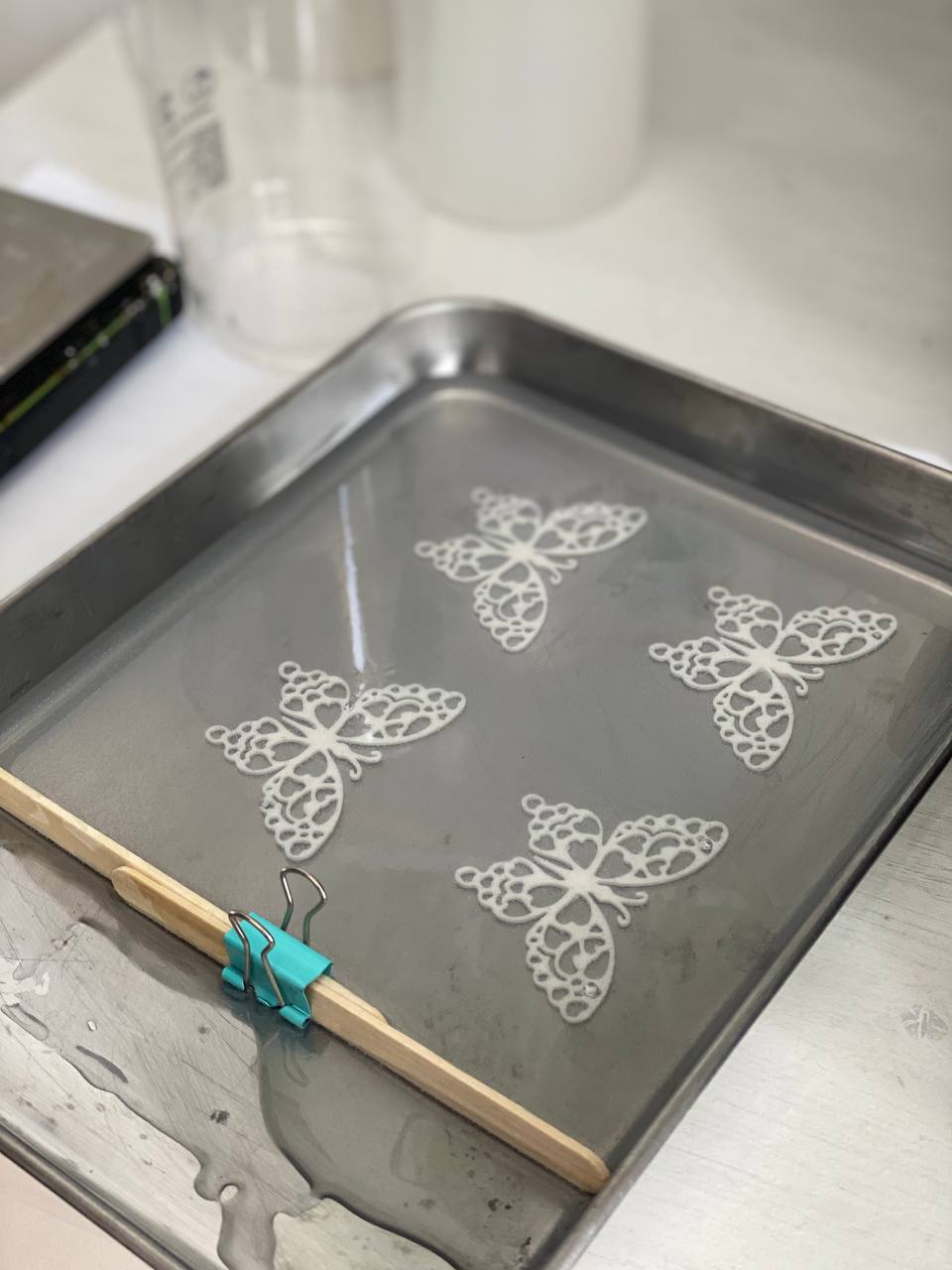
Then I cut out the mould to fit into the tray easier:
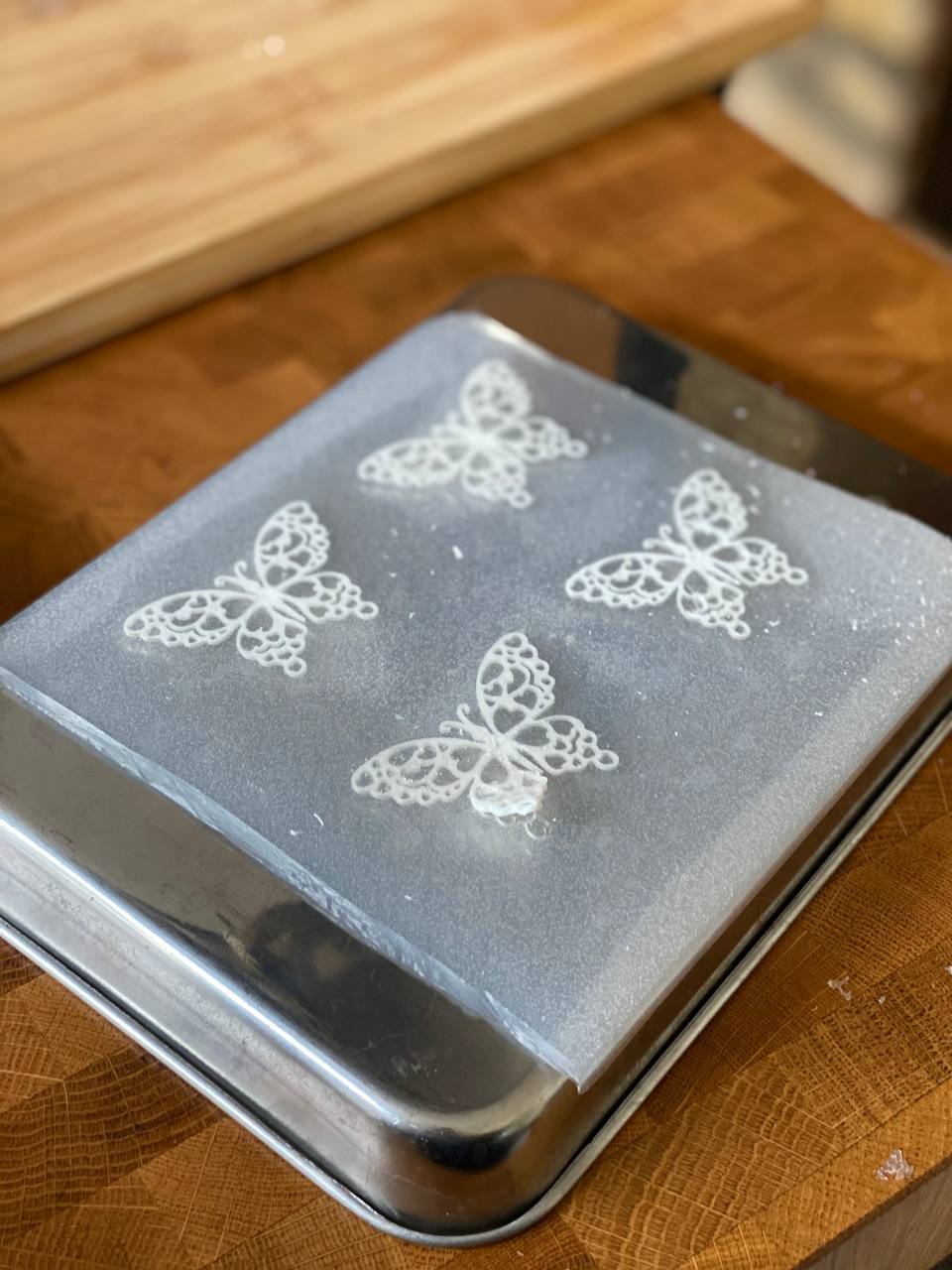
As the butterflies weren't attached perfectly, they got buried in the silicone too, so I had to carve them out carefully (or better to say, to trim the mould by a few mm with a sharp knife).

Then I used a palette knife to carefully fill the moulds with a tuille batter (equal parts of sugar, flour, butter, and a protein – an egg white in my case).

That was baked at 180ºC for 10 minutes:

I still have to learn how to take the tuilles out of the mould quicker, as once they cool they become very fragile but that's already pretty cool. The silicone also should be fine when frozen (I believe up to -40ºC at least), so next time I will probably make something else.

And on a completely separate note, this week I will be celebrating another turn around the sun, but instead of using the time off to fly somewhere I've decided to walk through a different kind of journey, a food one, and it already started by visiting the recently opened restaurant BiBo by Dany Garcia, a three Michelin-starred chef, who's recipes I tried replicating at home in the past.
One of those dishes was an oxtail brioche, a tiny burger filled with the a perfectly cooked ragu, and I've got a chance to trry the original one:
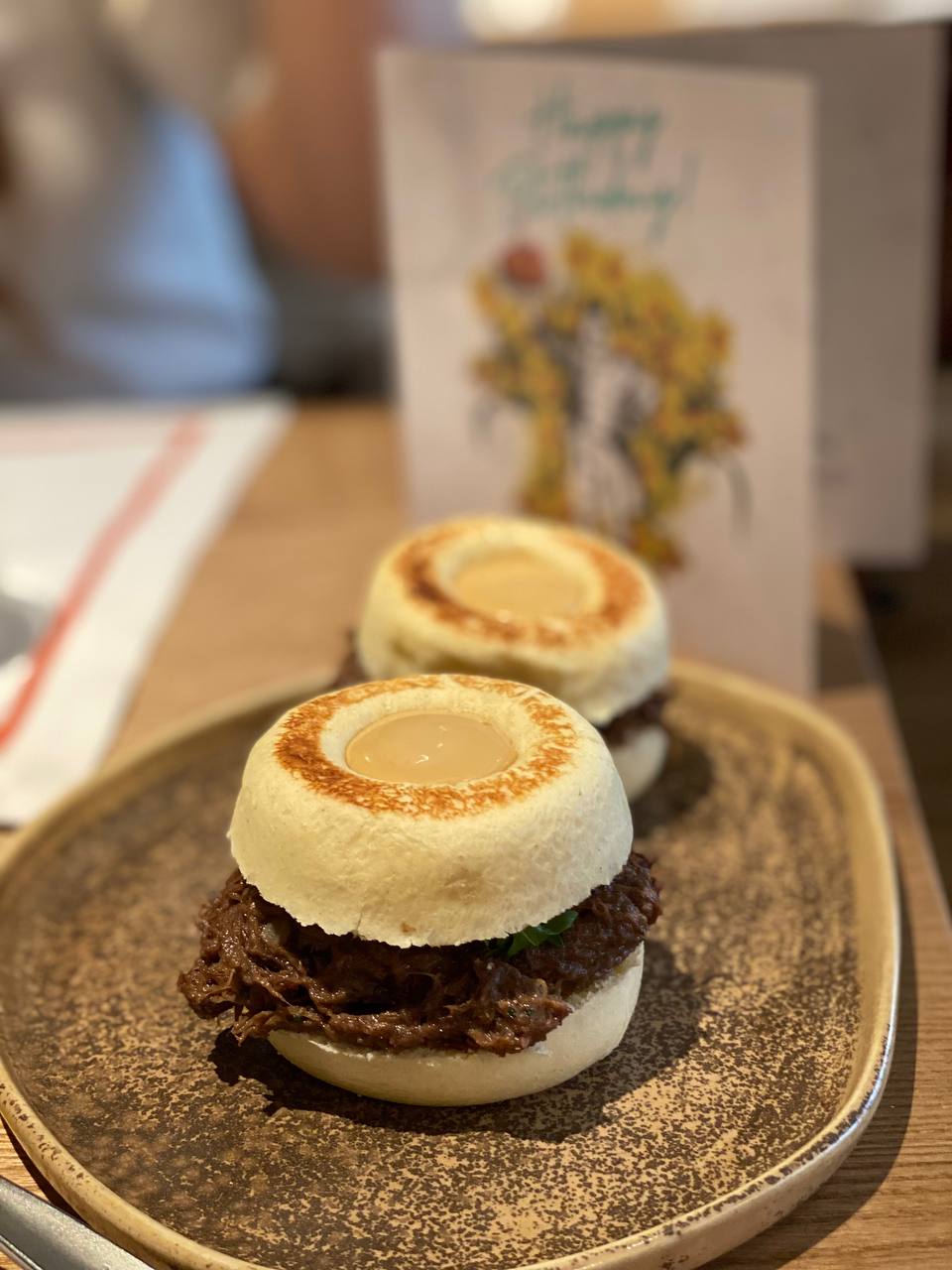
I've got to say that while (my attempt at home) completely lacked in presentation (and the dough didn't rise as well as it did in Garcia's custom made molds), the burgers were very similar in terms of taste, so I definitely call it a win.
Things I enjoyed reading ¶
1. An Art Revolution, Made With Scissors and Glue by Jason Farago ¶
A really nice story about collages and their influence on modern art:
In the northern stretches of Paris 110 years ago, between sips of absinthe and whispers of war, two young friends were busy reinventing how a picture worked. They’d done it with paint; now they wanted to go further.
All they needed were scissors and glue.
Collage (from the French “coller,” to paste) was invented in 1912 — by either Pablo Picasso or Georges Braque, Cubism’s dynamic duo. But the first artist to exhibit a collage was Cubism’s third wheel: the young Spaniard Juan Gris.
Interactive articles are among my favourite media styles these days.
If I were to write about something visually composable, like a dessert recipe, I would love to be able to build it in a similar fashion, but that seems to be to niche until mobile devices and other gadgets catch up with the speed and performance requirements for the content.
2. How Intelligent Are Cats? by Sarah Hartwell ¶
A very elaborate attempt to understand and estimate how smart cats are, which includes various tests, some training and a few odd devices:
Some puzzle-boxes were quite complex. One latch required a simultaneous lift and push, and in other cages two or even three latches had to be opened in the correct sequence. Not all cats mastered these, but some did. The skills were gained gradually and Thorndike concluded "The gradual slope of the time-curve, then, shows the absence of reasoning. They represent the wearing smooth of a path in the brain, not the decisions of a rational consciousness." This is a generalisation as some cats improved abruptly and made no further mistakes even if months elapsed between tests.
I wouldn't say that the conclusions would make me to pick a cat over a dog, but I definitely thought they're not as smart as they appear to be.
3. How Swipe Typing works by Francesc Garcia ¶
As a software engineer it's very easy to think that I know how something works until you try to implement it.
So I might think that I do know the concept behind swipe typing, and the rest is just "implementation details", but that's actually quite misleading, and this more detailed explanation showed it well:
To decide which words are the best fit to decode, we use a beam search algorithm with an aggressive pruning of invalid search paths. For us, an invalid search path is a path of points with a decoding probability lower than the threshold calculated using real data from our users. These search paths are built using one or several dictionaries of valid words in what’s called a “Directed Acyclic Graph” (DAG) optimized data structure.
Does it mean that without knowing these details I wouldn't be able to come up with some way to make it work myself? Nope, I probably would, but I am pretty sure it won't be as efficient and reliable.
4. Tasting the Fabled Peanut Butter Fruit by Alex Mayyasi ¶
Something I didn't know before and now just craving to try – a fruit that tastes akin to a Peanut Butter & Jelly sandwich, which also has a really interesting story behind it:
I apprehensively tried my final fruits a few days later. “That’s it,” I said aloud. The texture was, indeed, like peanut butter, with a bit of nutty taste and even a hint of jelly flavor, which I’d read about in accounts that joked the fruit was a PB&J sandwich in fruit form.
Probably pretty much impossible to source here though, so I will leave it in the bucket list for now.
5. The Legend of the Music Tree by Ellen Ruppel Shell ¶
The musicians' alternative to the Grail: a guitar made out of the rarest and most coveted tree in the world.
Finger-style virtuoso Andy McKee, whose YouTube videos have racked up more than 59 million views, owns a Tree guitar, as does David Knopfler, co-founder with his brother Mark of the British rock band Dire Straits. But Slash, McKee and Knopfler are among the exceptions; very few musicians own a guitar made from The Tree. David Smith put it bluntly: “Not many musicians can afford them.” The guitars range in price, but start around $30,000.
Surely there is more to music behind the musician themselves, rather than behind the instrument they use, but it's an interesting read nonetheless and I can see why people are dreaming of owning it.
6. Taking Flight Without a Smart Phone by @devtails ¶
The experience in the most pretty much sums up my attempts to avoid relying on the smartphone that much:
The day of my trip arrived and I remembered that I needed to get to the airport somehow. “I’ll just Uber”, I thought to myself. I booked one on my laptop and specified a pick-up location that I felt confident I could wait without needing my phone. As the time got closer, I thought of all the scenarios that could happen and ultimately decided to put my SIM card in the smart phone so that I could check on the status of my ride.
At that point I tried pretty much everything, from tuning the grayscale palette to barely be able to use it, to switching to a "dumb" phone, but nothing really words in the world where so many people rely on you being able to return their messages within minutes of reception.
7. How do people learn to cook a poisonous plant safely? by Tim Harford ¶
Whenever I try something I didn't expect to be edible (or tasty), I wonder how people ended up cooking and eating it.
And the answer seems to be in a higher exposure to different cultures nowadays, but that comes at a cost:
But like nardoo, cassava is highly toxic. It also requires a tedious and complex preparation ritual to make it safe. The cassava root will otherwise release hydrogen cyanide.
What makes cassava particularly treacherous is that some processing will reduce the bitter taste and the risk of immediate cyanide poisoning.
Surely there are thousands of years of evolution behind, with tribes noticing that some people die after eating a green-coloured mushrooms, and some people talk to a god after eating a red-coloured one, but at the same time there are way more recipes invented in the last century than there were in the previous ten, so we're probably doing fine, but now I will be a bit more careful picking up unknown ingredients and cooking them based on the random recipes from the Internet.
8. Taking pictures the hard way by Martijn Braam ¶
Seems like I am reading way more about photography these days (at least comparing to the previous years). Partly it's because I am constanly running out of memory on my iPhone, but also because some of the pictures I found there were really good and I want to repeat the success.
I still don't think that analog photography is a way forwards (at least for me), but that's really exciting to learn about nonetheless:
The main reason for picking this specific camera over a fully mechanical one is that getting into analog photography is scary when picking a fully mechanical/manual one. I get only 36 shots, no feedback until I took all the shots and the quickest way to get annoyed by doing analog photography would be getting the first developed film roll back full with out of focus and under/over exposed pictures. The F90 gives me all the manual options and has compatability with autofocus on most of my existing lenses, but it also has a full-auto point and shoot mode.
Also an beginner's analog camera is not that expensive so maybe one day I will give it a try.
9. The Gambler's Fallacy is Not a Fallacy by @kevin_dorst ¶
A nice essay about two fundamental forces of gambling:
But wait! If you think that, you're committing the gambler's fallacy: the tendency to think that if an event has recently happened more frequently than normal, it's less likely to happen in the future. That's irrational. Right?
It doesn't necessarily mean that the thesis in the post is correct (I personally err on a slightly different definition of the Gambler's fallacy), but it sparkles a great discussion anyway.
10. Ham biscuit on by @ericwbailey ¶
The best technical, or design, or any field's posts are the ones where you learn something new from a completely unrelated field:
The problem is we don’t know the initial state of the ham biscuit sign and who it is intended for. We can make assumptions, but it is guesswork to address unnecessary ambiguity. The only real way to actually know is to enter the McDonald’s and verify if our guesses are true.
The story is not only about the McDonald's signs, but I won't spoil you the rest.
Things I didn't know last Tuesday ¶
1. Pain Suisse ¶
Last week I've mentioned at attempt at reproducing Cedric Grolet's pastries at home, but didn't mention another dish we've tried there, which looked like a significantly improved version of pain au chocolate:
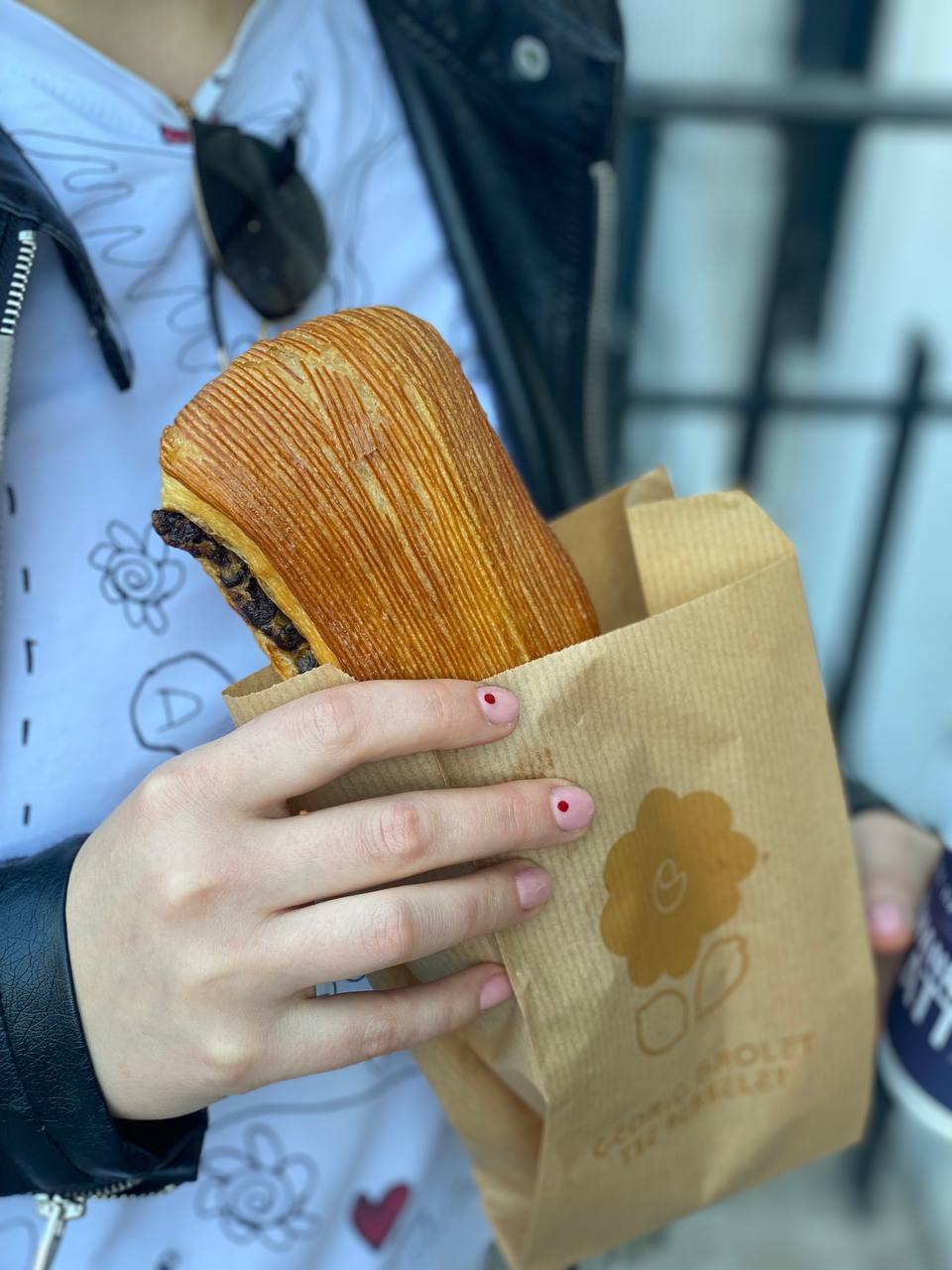
However the waiter got offended when I called it a "pain au chocolate", and I've learnt why only recently.
For the uninitiated, a brioche suisse is a particularly delightful viennoiserie consisting of brioche dough or croissant dough rolled out and then folded around vanilla pastry cream and chocolate chips. The chocolate is more evenly distributed than in pain au chocolat, and the pastry cream is less overwhelming than, say, the filling in a Danish.
So now I don't really understand why I'd ever get a plain pain ever again.
2. Wanderwort ¶
I didn't know that there is a word for words that came from another language.
A Wanderwort (German: [ˈvandɐˌvɔɐt], 'wandering word', plural Wanderwörter; capitalized like all German nouns) is a word that has spread as a loanword among numerous languages and cultures, especially those that are far away from one another, usually in connection with trade.
At the same time I am not surprised that there is a German word for everything again.
3. Apizza ¶
Some parts of the States have a different name for "pizza":
That pronunciation is Neapolitan dialect, a simplification of la pizza. New Haven CT is hailed as today’s apizza center of the U.S. by its dedicated fans who probably would refuse to even enter a pizza chain’s parking lot.
I couldn't really understand how it's different, but seems like it's closer to a Pizza Hut-style pizza rather than a classic Italian one.
4. Palmer notation ¶
I never could refer to a tooth without pointing with a finger, or counting up from the very middle. Seems like there is a way better way though:
Palmer notation is a dental notation (tooth numbering system).
At the same time, dentists in different countries (or even in different clinics within the same country) might use different notations, so that's only moderately helpful. Wikipedia reassures that most dentists here in the UK are familiar with the Palmer one.
5. Philadelphia Cream Cheese is not from Philadelphia ¶
That's like next level marketing to me:
In 1880, when New York cheese broker Alvah Reynolds pitched New York dairyman William Lawrence on creating better branding for his new product — which was richer, creamier and fresher than the more common Neufchatel cheese — Philly was widely considered the country’s top spot for high-quality dairy.
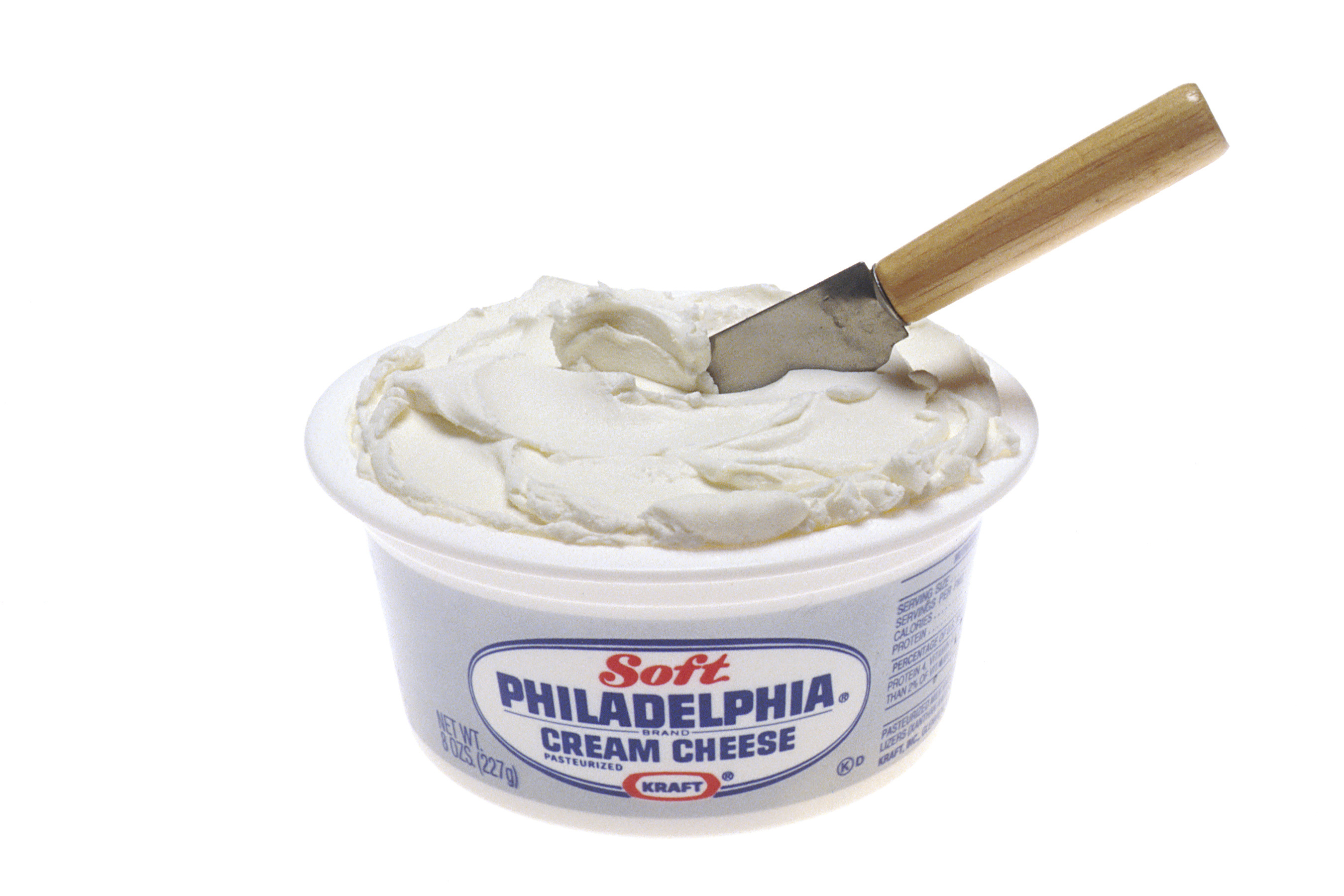
Stay tuned for the next revelations in the upcoming episodes: Mars bars are not made on Mars, but Milky Way bars are indeed made in the Milky Way galaxy.
6. Marijuana edibles can't be shaped like humans, animals, fruit, etc ¶
Mike Tyson tried to start selling ear-shaped edibles (because of his ear-biting incident, obviously), but apparently that is illegal:
A 2016 state law prohibits marijuana edibles from being shaped like humans, animals, fruit or other objects that could attract children, and according to the Colorado Marijuana Enforcement Division, Holyfield's chomped ear is just too damn attractive. The vegan, ear-shaped edibles are "directly applicable" to the law banning human body part shapes, according to MED communications director Shannon Gray.
Maybe he would consider ear-shaped pastries without drugs instead? That'd still be cool.
7. Skyr ¶
Recently I found a perfect mixture of a yogurt and cottage cream, which is also made out of skimmed milk so is low in calories and is high in protein, which is a win-win.
Skyr is an Icelandic cultured dairy product. It has the consistency of strained yogurt, but a milder flavor. Skyr can be classified as a fresh sour milk cheese (similar to curd cheese eaten in Estonia, Germany and Russia) but is consumed like a yogurt.

At the same time I am still confused where Icelandic farmers sourced their skimmed milk for all these years. I do understand the technical process, but I don't understand why they'd go through all this additional effort.
8. Phloem bundles ¶
Those white strings on a banana?

"Phloem bundles” is the admittedly unappetizing name for those flat strings of banana that exist between the peel and the fruit itself. These bundles distribute water and nutrients throughout the berry.
So better not to throw them away.
9. Fireless cooker ¶
Another odd invention from the past:
A haybox, or [...] fireless cooker is a cooker that utilizes the heat of the food being cooked to complete the cooking process. Food items to be cooked are heated to boiling point, and then insulated. Over a period of time, the food items cook by the heat captured in the insulated container. Generally, it takes three times the normal cooking time to cook food in a haybox.

I won't be surprised if modern zero waste facilities give them a second life though: it takes longer, but there is pretty much no waste and no need for additional heating.
10. Circular breathing ¶
A cool technique to play on some instruments:
Circular breathing is a technique used by players of some wind instruments to produce a continuous tone without interruption. It is accomplished by breathing in through the nose while simultaneously pushing air out through the mouth using air stored in the cheeks.

I wonder if any snorkelers out there tried to use it as well.
Book of the week ¶
Last week Sasha found a book in charity shop, and pretty much everything about it made me sceptical.
The title, the typography, the name-dropping of a few famous chefs on the cover, the description, and even the author's other books designed in a very similar fashion, everything screamed baloney.
Boy, was I wrong!
Matt Goulding's Pasta, Pane, Vino is an attempt to record travel memories through the world of food – one that is as volatile and fleeting as a freshly cooked dish.
It starts with a dedication to nonne, who have taught the world so much about eating, and proceeds with telling stories about other people of (mostly) recent generations, who's contribution to the food we love (that is pasta, bread, and wine) was indispensable.
But you don’t come to Palermo to stay in minimalist hotels and eat avocado toast; you come to Palermo to be in Palermo, to drink espressos as dark and thick as crude oil, to eat tangles of toothsome spaghetti bathed in buttery sea urchins, to wander the streets at night, feeling perfectly charmed on one block, slightly concerned on the next. To get lost. After a few days, you learn to turn down one street because it smells like jasmine and honeysuckle in the morning; you learn to avoid another street because in the heat of the afternoon the air is thick with the suggestion of swordfish three days past its prime.
You come here because everyone wants to pretend, for a few days at least, that they are Italian, and there is no easier city in which to do that than Palermo. You can walk the markets without bumping shoulders with other tourists; eat ice cream, like a Sicilian, at any hour of the day; have a late dinner down an alley cast in an orange summer glow; rent an apartment on a narrow street in the old city and hang your wet clothes from the balcony. Before you pack your bags and catch that flight back to Cork or Colorado or Copenhagen, you can have one last lemon granita at the sidewalk café that has quickly become your second home in the city and think to yourself, So this is what it would be like.
It is also a beautiful collection of facts and trivia, from the pizza police who have an app to report places that falsly claim to cook Neaoplitan pizza, to obscure Sardinian recipes.
The only downside of reading the book is that it both brings back the memories of my past trips to Italy but also increases the desire to go back tenfold.
So approach on your own risk, and stock up the fridge with the right ingredients beforehand.
Thank you and see you in a week! ¶
If you have any questions, or want to suggest a link for the next newsletter, please drop me a message on Twitter or reply to this email.
Cheers! 🍸